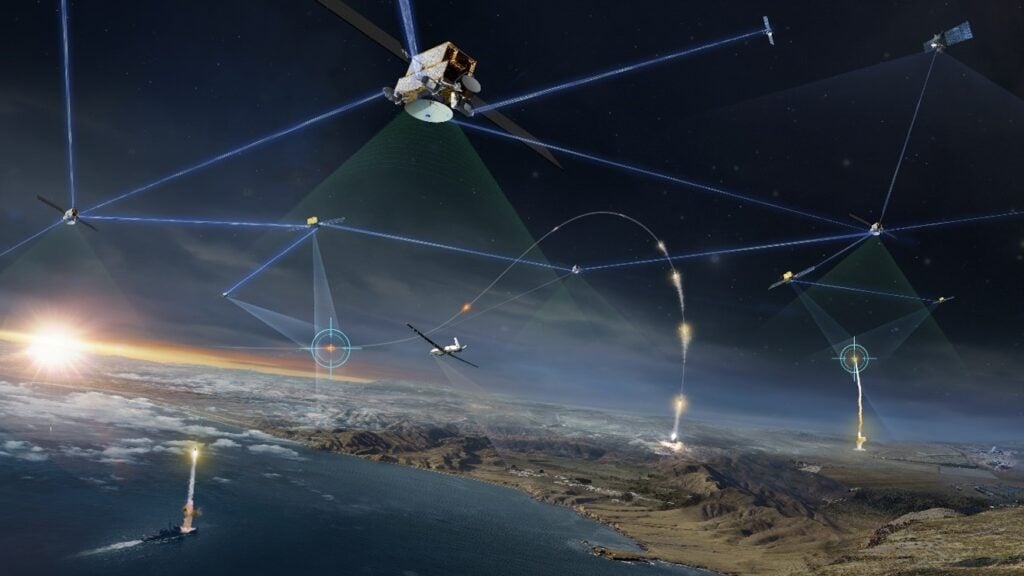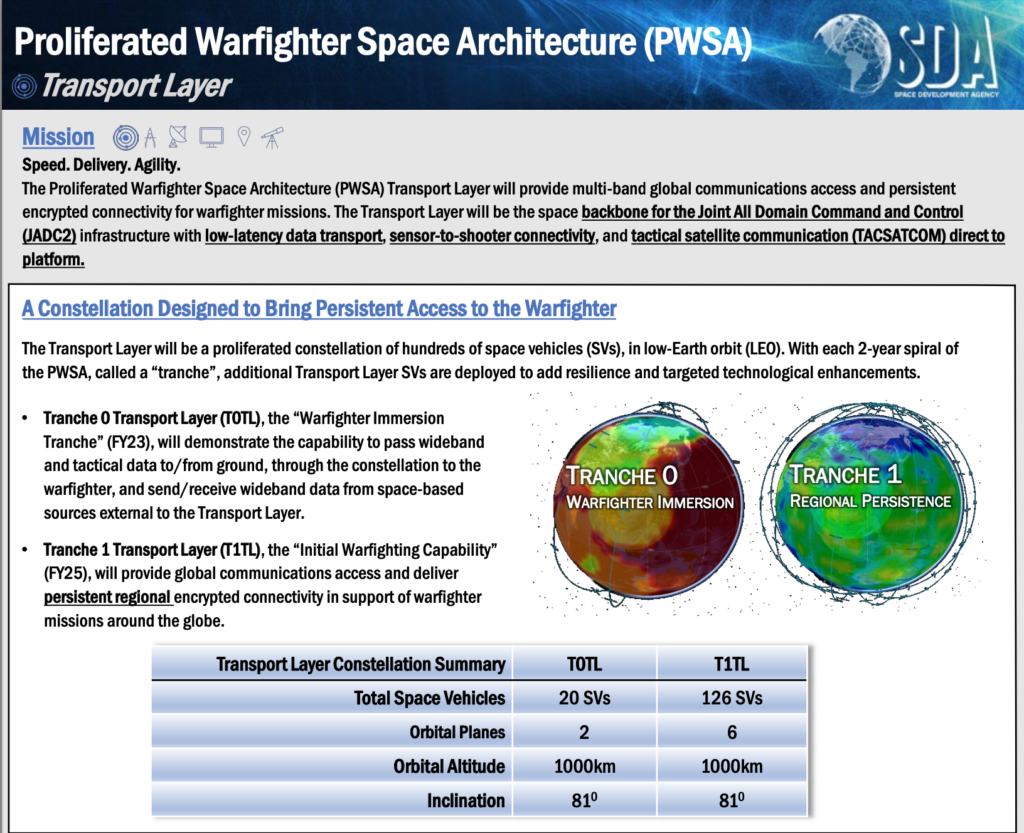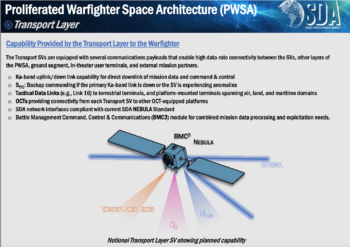
The Space Development Agency will begin launching its first operational data transport satellites in 2024, part of the Space Force’s effort to build a space version of the internet. (Image: Northrop Grumman)
WASHINGTON — The Space Force’s Space Development Agency today opened bidding for 100 new satellites to flesh out its planned low Earth orbit constellation to provide military users high-speed, high-volume data communications world-wide — signaling continued progress despite recent delays.
The plan, according to the solicitation, is to grant two contractors Other Transaction Authority awards to design and build the “Alpha” variant of SDA’s Tranche 2 Transport Layer satellites, with delivery of the first four in time for a September 2026 launch.
SDA’s Transport Layer ultimately will comprise some 300 to 500 satellites interconnected via laser cross-links to provide users with high-speed, high-volume, low-latency (i.e. minimal delay) data transmission — a network that will provide a foundational capability to substantiate the Pentagon’s Joint All Domain Command and Control (JADC2) concept.
The Transport Layer, in turn, is part of a planned multi-mission network comprising thousands of LEO satellites, called the Proliferated Warfighter Space Architecture, designed to flummox enemy attacks by making targeting much more difficult through the tyranny of numbers.
Somewhat confusingly, Tranche 2 actually represents SDA’s third set of satellites designed under its spiral development approach and like its predecessors will include not just Transport Layer satellites but also missile warning/missile tracking satellites for SDA’s planned Tracking Layer constellation. SDA plans to orbit 216 Tranche 2 Transport Layer birds.

The Space Development Agency’s Transport Layer is the linchpin of the Space Force’s newly planned distributed satellite architecture. (SDA)
SDA on April 2 launched its first set of 10 satellites, called Tranche 0, designed to primarily serve as test models: eight data transport birds developed by York Space Systems and two missile tracking satellites built by SpaceX. While one of the York Transport Layer satellites has experienced some problems due to a “defect,” an SDA spokesperson told Breaking Defense that “Tranche 0 is generally going as planned.” (The agency also tweeted June 14 that it had received the first images from the SpaceX birds.)
Nonetheless, as reported by Space News, the agency now expects to launch the second batch of 13 Tranche 0 satellites at the end of next month, rather than this month due to unspecified delays. Four L3Harris Tracking Layer satellites filling out Tranche 0 will be launched at an unspecified later date.
In February 2022, the agency awarded $1.8 billion in contracts to York, Northrop Grumman and Lockheed Martin for development of a follow-on set of 126 Transport Layer satellites, dubbed the Tranche 1 constellation. Tranche 1, expected to be launched in 2024, will be the first operational data relay constellation for SDA, which will provide what the agency calls “regional persistency” — meaning they can be “turned on” to transmit data over one theater at a time. They are expected to begin operations in 2025, before the any of the next set of Tranche 2 satellites is on orbit.

The Transport Layer is being designed to provide low latency data transport linking sensors to shooters in all domains. (SDA)
The Tranche 2 Transport Layer constellation will provide “global communications access” via utilizing improved designs, according to today’s solicitation. SDA plans three different “instantiations” of the Tranche 2 Transport Layer called Alpha, Beta and Gamma — each carrying slightly different payload sets.
SDA on May 24 issued a solicitation for the Beta version: 72 satellites which will carry optical intersatellite links for cross-satellite communications and a UHF Tactical Satellite Communications (TacSATCOM) downlink for tactical users. The plan is to launch 12 of the Beta versions along with the four Alphas in September 2026, followed by “an approximately year-long, monthly launch campaign,” the solicitation said.
The Alpha variants will be closer to the Tranche 1 Transport Layer satellites, and carry laser crosslinks, a Ka-band communications downlink, on-board battle management processing and a Link 16 data link for machine-to-machine connection with current platforms such as aircraft and ships.
SDA intends to issue a solicitation at the end of the year for 44 Gamma variants that will resemble the Beta configuration but with the addition of advanced waveforms to improve the satellites signals capability.






















